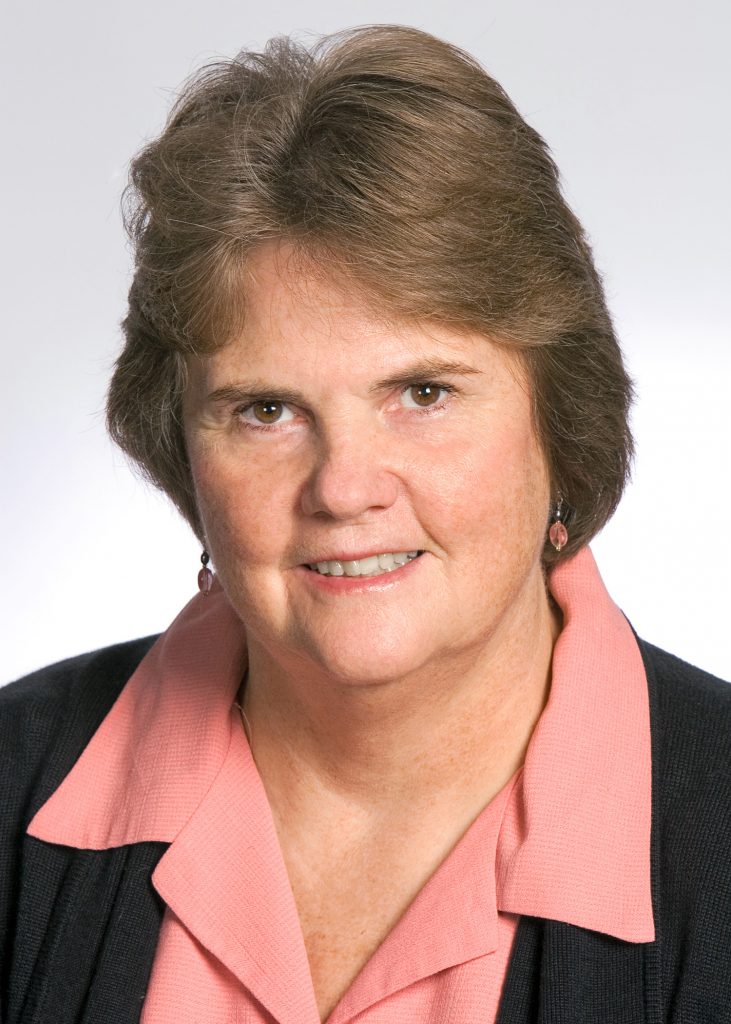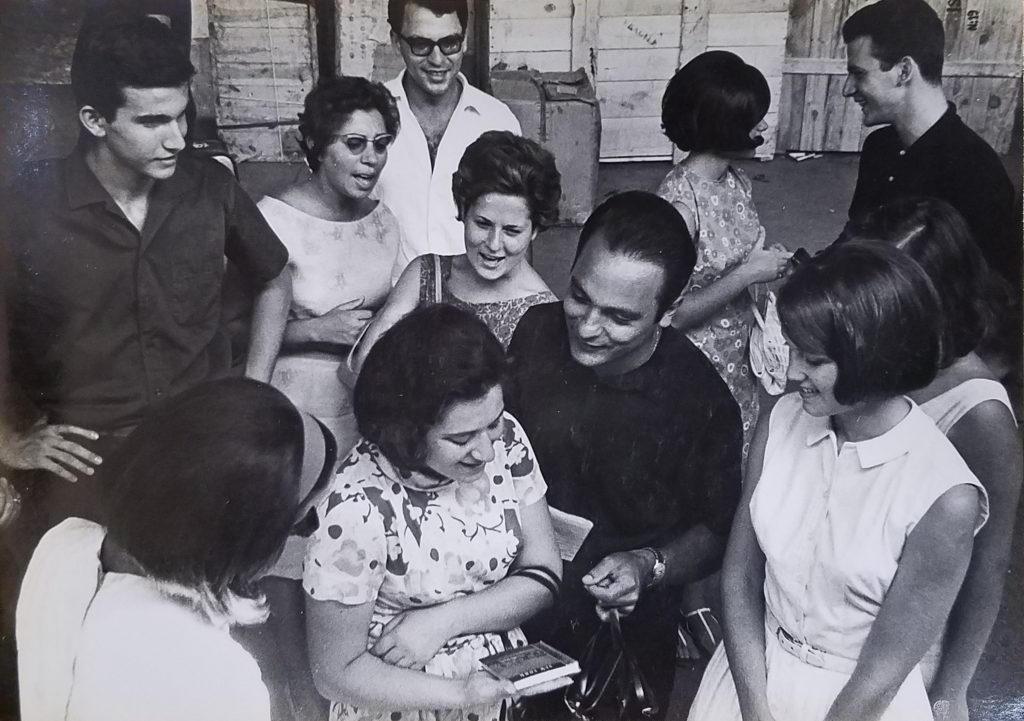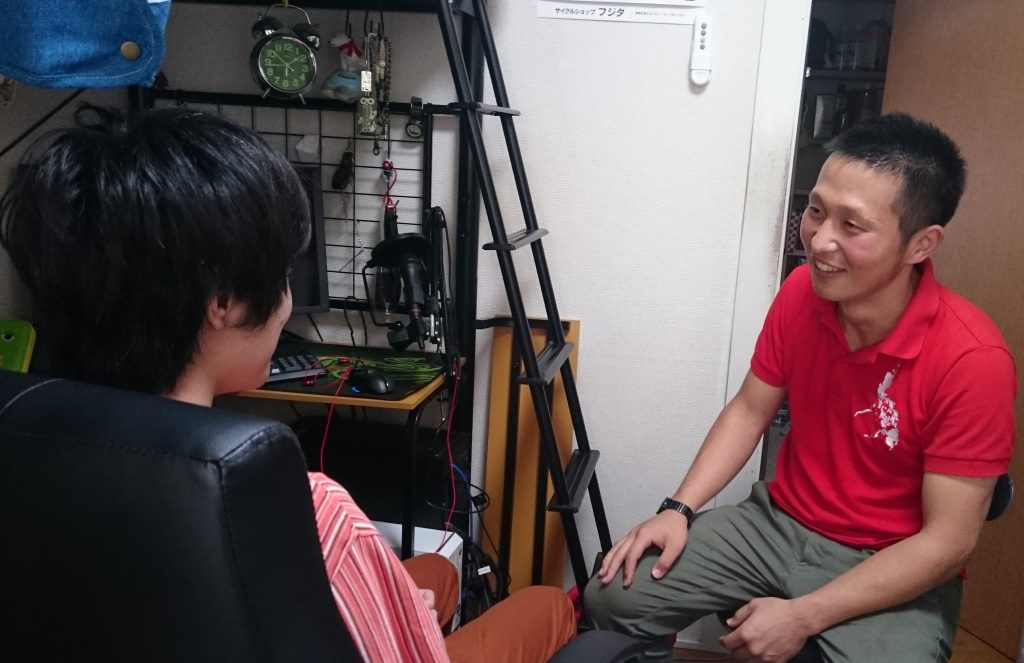Building peace through language
November 18th, 2019 | SIT Graduate Institute
National award caps a half century of training teachers at SIT

BRATTLEBORO, Vermont – When the U.S. State Department celebrated School for International Training as the top producing institution of English Language Fellows, it capped a watershed year for the SIT TESOL program.
The award, presented to SIT President Sophia Howlett during a Washington, DC, ceremony on Nov. 6, put SIT as first among seven institutions nationwide that have produced the highest number of participants for the prestigious fellowships. Of all the State Department fellows named since 2006, the year the agency began to keep track, 57 have been SIT alumni.

SIT TESOL Professor Emerita Diane Larsen-Freeman, herself a leading figure in the field, said she was “pleased, but not at all surprised” by the State Department award. “As I travel, I have encountered many [English Language Fellows], and I have witnessed their professionalism and their dedication to the students they serve. These qualities are also evident in SIT alumni, who, in addition to their excellent teaching, adaptability, and intercultural competence, have learned how to learn from experience.”
... in addition to their excellent teaching, adaptability, and intercultural competence, [SIT TESOL alumni] have learned how to learn from experience.
The award also comes as SIT marks the 50th anniversary year of the MA program that has earned an international reputation for its experiential approach to teaching English to speakers of other languages, the field known as TESOL. As one of the oldest language teacher education programs in the country, SIT has at the same time been on the cutting edge of the field—a fact that holds true today as much as it did when the program began a half century ago.
Leslie Turpin, chair of the MA TESOL program at SIT, said she was proud of the achievements not only of alumni, but also of the TESOL faculty members over the last 50 years “who have devoted their careers to creating a program that supports students to develop a teaching practice grounded in intercultural competence, self-awareness, reflection on and learning from experience. This award is a testament to the collective commitment of our students and faculty to making the world a better place through their deep love of learning and teaching.”
Roots in Social Justice
Turpin’s comment is a nod to SIT’s roots in social justice, including refugee education and the program's historic roots in the Peace Corps.
What is today the nation’s leading TESOL program grew out of the training programs for outbound Peace Corps volunteers that started in this quiet corner of Vermont in 1961. “It may surprise many to learn that a small institution founded in southeast Vermont could have a major impact on the field of international education and intercultural exchange worldwide,” SIT Professor Emeritus Alvino Fantini wrote in a recent blog post.

When Sargent Shriver was tapped by President John F. Kennedy to become the founding director of the Peace Corp, Shriver turned to The Experiment in International Living—an organization that had played a formative role in his early life—to help train outbound Peace Corps volunteers. Shriver had been a participant and later a leader with The Experiment, which started in 1932 with a group of students who sailed across the Atlantic with the mission of fostering peace through understanding, communication, and cooperation.
More than 80 years later, The Experiment today takes high school students around the world to live with families, develop friendships, and understand different cultures. But in 1964, the language programs were spun off into a new organization—School for International Training—which today works with undergraduate students on seven continents through SIT Study Abroad, and with master’s level students, including TESOL, through SIT Graduate Institute.

Its vision is one of world peace; its mission is to help build it.
Fantini, who began teaching at SIT in 1964, said today’s TESOL program is a logical outgrowth of SIT’s early experience in teaching foreign languages. “SIT has always focused on enabling learners to communicate in another language in order to be able to participate more fully in another culture,” Fantini wrote.
In other words, as he put it later: “Its vision is one of world peace; its mission is to help build it.”
SIT also has a strong track record in refugee education—which has become one of four new concentrations offered in the MA in TESOL program. From the 1970s through the mid-1990s, SIT TESOL faculty and many alumni worked in collaboration with the NGOs World Education, Save the Children, and SIT’s parent organization, World Learning, to provide extensive education to Southeast Asian refugees living in camps in Thailand and Indonesia prior to their resettlement in the United States.

Over a 15-year period, more than 250,000 refugees participated in the programs, which focused on work and school skills, cultural adjustment, English and mother tongue instruction, and services for refugees with learning disabilities.
“The MAT faculty were essential partners in developing and working in these U.S. State Department-funded programs,” said Turpin. “They conducted needs assessments, created and evaluated curriculum and materials, and trained and supervised local teachers (including refugee and Thai and Indonesian nationals). An important by-product of these initiatives was the extension of programs into local, host-country schools and the skill-building of local teachers.”
An Experiential Approach
Fantini calls cross-cultural communication an “open-ended challenge.” SIT’s TESOL program has reflected that through continuous exploration of how best to teach language acquisition and mediation skills and raise cultural and linguistic awareness. But over the years, one constant has remained: the experiential nature of SIT’s pedagogy.

SIT didn’t just teach us how to teach English effectively, but also how to empower people through experiential learning.
It's an aspect that can catch students from a more traditional educational background off guard. Shinichiro Matsugama came to SIT in 2012 for his MA in TESOL with the intention to return to Japan to become a teacher. “The first day of orientation for the MAT program, Leslie[Turpin] told us ‘It’s a nice day; why not go outside?’ So we went outside and played a game—working as a team to bridge a river using a cup and paper. To me, a person who graduated form a rigid education system in Japan, it felt like a child’s game. I thought, ‘Why should we do this? It’s just playing.’ So, I was kind of irritated.
“But then we went back to the classroom and discussed our observations about what was happening. We talked about our emotions and how we felt. The professors asked us what was happening during the activity and collectively we tried to interpret and learn from our experience. Then the professors asked us what we would do the next time to work more effectively as a team. They explained the concept of experiential learning and they said, ‘Welcome to SIT!’ That was a transformative experience for me.”
Ultimately, SIT’s experiential learning approach led Matsugama to follow a different career path. Today, he has a PhD in positive psychology and directs the Strength Association, a group he founded to work with Japan’s hikikomori, socially isolated youth who often don’t leave their houses for years at a time. Suicide rates among this group are extremely high. Matsugama credits SIT with his approach, which focuses on his clients’ strengths rather than their weaknesses. For example, because most of them play videogames, he often talks with them about their play styles and motivations in order to identify strengths such as teamwork, strategy or leadership.
“SIT didn’t just teach us how to teach English effectively” he notes, “but also how to empower people through experiential learning.”

I remember thinking ‘this is extraordinary.' They’re not only teaching this, they’re living it.
Arline Saturdayborn was 66 and felt self-conscious about her age when she came to SIT’s TESOL program a decade ago. In today’s youth-focused society, she said, “you take in limiting bias about yourself unconsciously. This program does not support that. It helped me enormously because we did a lot of cultural experiences and I was able to apply that to myself: The culture that I grew up is not the culture I wanted to live my life from, a youth-obsessed culture.”
Saturdayborn, who teaches English to immigrants in Portland, Maine, said she was impressed with how SIT faculty lived what they were teaching. She recalled how, when one student got upset about the way things were being done, during the next class he was able to work independently in a way that suited him better. “I remember thinking ‘this is extraordinary,’” said Saturdayborn. “They’re not only teaching this, they’re living it. There was a space for everyone. That was a profound teaching experience.”
Now in her 70s, Saturdayborn added, “If I am lucky enough to teach another 20 years, I will continue to learn from it.”
Still Breaking Ground: Plurilingual Pedagogy
The TESOL program's unique history is what laid the groundwork for its creative approaches to language education and intercultural communication. According to Fantini. “This innovative program continually explored a variety of new and exciting approaches to teaching language. Nonetheless, the most important lesson was not to subject students to the best methods of the day, but to subject the best methods of the day to the needs of students and the cultural context of the teaching situation wherever it be in the world.”

That evolving process is what led Turpin and TESOL Professor Elka Todeva to make some significant changes this year. They added four distinct concentrations: plurilingual pedagogy; teaching refugees and displaced persons; teaching young learners; and teacher training. (“Plurilingual” refers to an individual who speaks and understands multiple languages and cultures, whereas “multilingual” refers to a society characterized by multiple cultures and languages.)
They also added a plurilingual concentration to SIT's pedagogy, making this the first TESOL program in the country to incorporate egalitarian approaches that celebrate diversity, mutual enrichment, and equity.
Turpin said the changes more fully reflect new sociopolitical realities and invite a deeper exploration of the way linguistic and cultural diversity can enhance learning.

The MA is currently offered in a two-year low-residency format in which students come to the Vermont campus for three formative weeks each summer, forming bonds with their cohort and meeting incoming students. But another unique feature is that SIT professors travel to their students' classrooms anywhere in the world to observe and assess their interactions in real time.
In a recent SIT podcast, Todeva explained that the guiding light of SIT’s program is that all students who come into the classroom bring a wealth of prior knowledge. “The beauty of plurilingual pedagogy is that it creates the space for us to tap into that knowledge,” she said.
“We live in a multilingual, multimodal world,” she continued. And while SIT’s program has always been about teaching and learning languages, the new focus embeds a broader and more inclusive foundation. “It’s not just a scaffolding device, allowing people to sporadically use their first or other languages in the classroom to facilitate understanding. Plurilingual pedagogy is a much broader concept; it involves tapping with greater intentionality into the rich linguistic and cultural knowledge of the learners. … It is a multidimensional sharing among all participants—teachers and learners—and their real and virtual communities.”

A student comes in with no English and two months later they are speaking. I love it.
That was an important concept for Uganda teacher and SIT alumna Margaret Akena, who teaches English at an international primary school in Kampala. “When you have different cultures in the same classroom, learners learn from each other; we are different but in a way that the difference is the strength,” Akena said. With few ESL resources at her disposal, she developed her own curriculum, which he now shares with other teachers.
Akena found that by accepting and highlighting their diversity, students settle into a safe space that allows them to learn more quickly. The result, she said, is often that “a student comes in with no English and two months later they are speaking. I love it – you might have 11 or 12 students on the first day of term from different countries. Sometimes they are crying; sometimes aggressive. But within a few days we are like a family.”
The plurilingual philosophy dovetails neatly with SIT’s larger, fundamental mission to prepare students to become leaders, professionals, citizens, and agents of change. While the new TESOL approach validates and celebrates plurilingualism as an asset for professional growth in a multicultural world, according to Todeva, it also recognizes the importance of linguistic diversity on a societal level, creating opportunities for honest conversations about people who speak multiple languages.
“We seem to follow two different Biblical concepts. One is Babel, where knowing multiple languages is a curse, and the other is the Pentecostal stance where knowing multiple languages is a gift,” said Todeva. “Our attitudes seem to change depending on who the plurilingual speaker is. Elite multilingualism is valorized and considered highly desirable and a source of pride. Grassroots multilingualism, on the other hand, is often portrayed as a liability, or looked upon with suspicion, seen as a refusal on the part of multilinguals to fully integrate into their new culture.
“It is critically important for us to problematize that double standard to multilingualism,” Todeva continued, “particularly in the current climate of growing nationalism, populism, and xenophobia, which are becoming more and more part of the mainstream political discourse. With the new MA TESOL program, students will be working on counter narratives that promote justice, empathy, inclusivity and a more tolerant world.”
